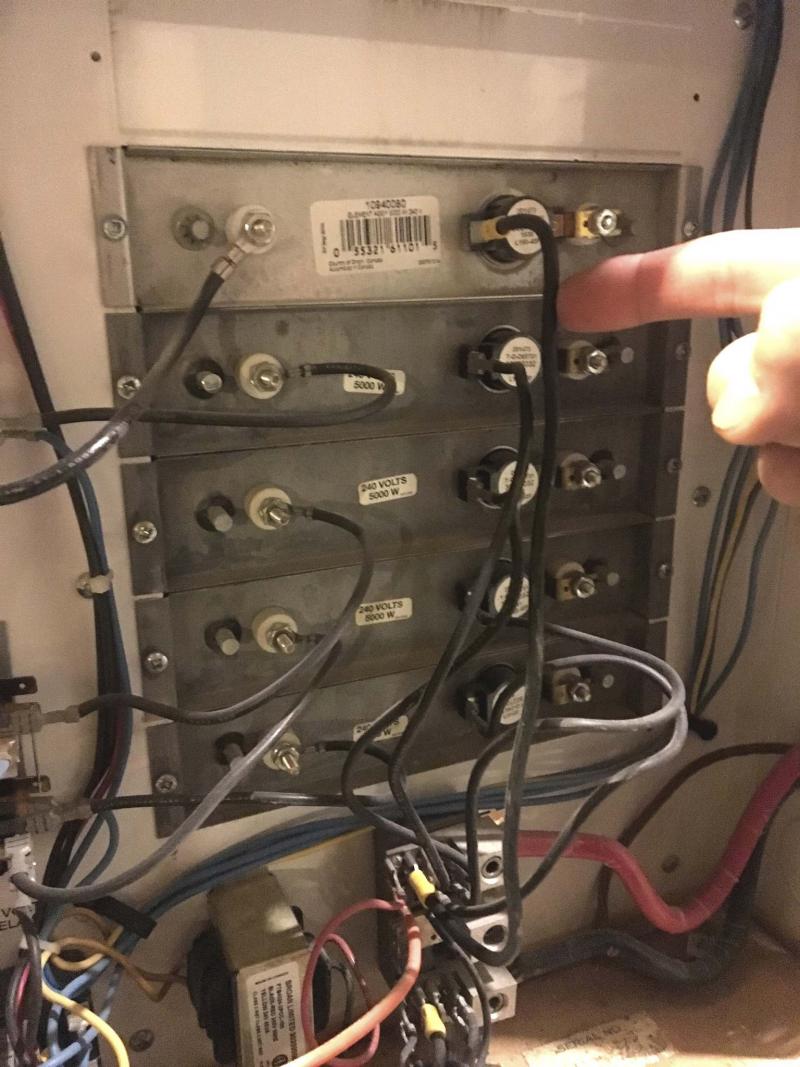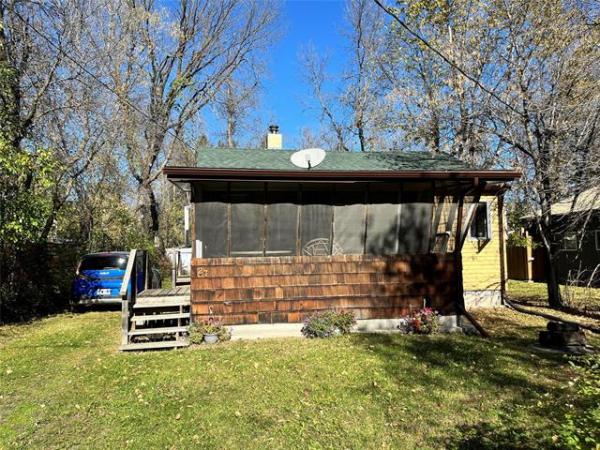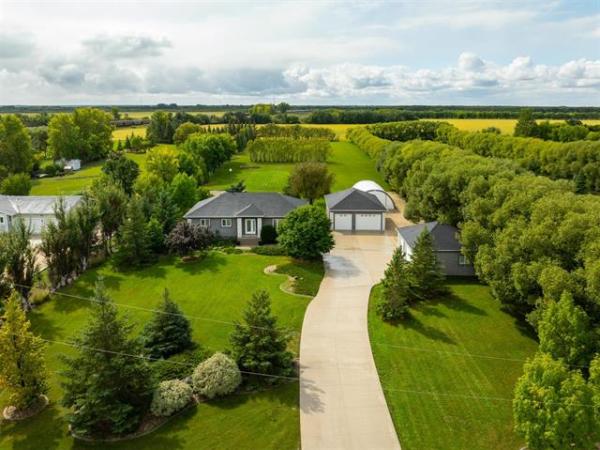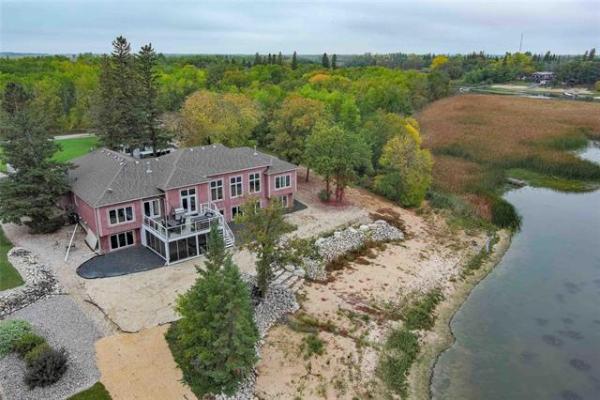
Marc LaBossiere / Winnipeg Free Press
It wasn’t the best time for a furnace to fail, but we got it fixed up once we figured out why the breaker kept tripping.
Last week was a tough one. With sustained temperatures at -40 C and wind chills near -50 C, household ventilation systems were put to the test. And if you reside in a rural area where natural gas isn’t available, an electric furnace may be your sole defence against the cold.
Before the recent addition to my house was built, it was necessary to examine the capabilities of my existing furnace. I had already decided to upgrade my old 2½-ton air conditioning unit to a 3½-ton heat pump, which cools the house in the same way an air conditioner does during the hot months and provides an affordable alternative to heating the home in the cooler months (through my Nest thermostat, I’ve set the minimum temperature on the heat pump to -5 C, and when the external temps fall below -5 C, the electric furnace takes over). As such, it would be necessary that my furnace maintain a comfortable temperature on the coldest days, throughout the house. Having added more than 500 square feet to my home with the recent addition, my existing furnace was on the cusp of being overburdened.
After a few informative chats with my ventilation contact, Keith Peters, he suggested I simply upgrade my existing furnace by adding an additional heating element. My furnace was initially equipped with four five-kilowatt elements and a half-horsepower blower. Although it kept up with my heating needs for more than a decade, I was concerned that with the added square-footage, it may strain my system on the coldest days. By introducing a fifth 5-kW element, a 25-kW furnace should have no problem with the added space.
While we were at it, I inquired whether it was possible to replace the existing blower with one that had better push. And that’s what we did — a three-quarter-hp blower was fitted into the existing base of my furnace. After a few tweaks, we compared the cubic feet per minute at a common floor vent. The reading of the half-hp blower was 46, and with the three-quarter-hp, 87. Great! The increased airflow would ensure all corners of my house received the proper ventilation.
Since the fall of 2016, my ventilation system has, without fail, performed as expected. However, the frigid temperatures of January 2019 arrived and apparently put my furnace to the test — or did they? After a long day of installing kitchen cabinets for a client, I returned home late that afternoon and walked into a house that had an interior temperature of 13 C. My Nest thermostat was offline, and I could not hear the furnace blower running. I ventured downstairs to investigate, and the breaker supplying power to my furnace had tripped. This was odd. During the furnace upgrade two years previous, I became quite accustomed with the following equation: amperage x voltage = wattage. Because the furnace was upgraded by 5,000 watts to 25,000 total, and keeping in mind the voltage remains relatively consistent (at 240V), the amperage would thereby increase accordingly.
There’s a regulation that states when fitting an electrical panel with the appropriate furnace breaker, the breaker must be rated 20 per cent higher than the calculated/anticipated amperage. When it was a 20-kWfurnace, the existing 125-amp, 240V breaker was more than adequate because the actual amp draw was approximately 87 (83.3 from four elements, and near four amps from the half-hp blower), well below the 20 per cent buffer. At 25 kW, the five elements draw roughly 104.17 amps, plus five or six amps from the three-quarter-hp blower upgrade — 110 amps, which intrudes upon the 20 per cent buffer on a 125-amp breaker. So, it was also necessary to upgrade to a 150-amp, 240V breaker, providing a more-than-sufficient buffer.
That the breaker tripped was cause for concern. And it couldn’t have happened at a worse time — the low temperatures and high winds were relentless and unforgiving. This needed to be addressed ASAP.
I called Peters. He first suggested I re-engage the breaker. If it didn’t trip again, it could have been an isolated voltage drop that caused an amperage spike past the breaker’s limit. Within a day, it did trip again and this time, I was there when it happened. I quickly ran downstairs to examine my panel — the breaker was very hot. Peters stopped by within the hour to inspect my connections. I’m told that during the coldest of days, the copper wire connections to the breaker (as well as those to the furnace itself) can loosen due to slight contraction, causing microscopic arcing, and this increases resistance, which can trip a breaker. Peters tightened all my connections and we once again reset the breaker.
The breaker once again tripped three days later. A determination was made — my 150-amp breaker was faulty and had to be replaced. I temporarily disabled the fifth element, hoping that by running the furnace as a 20-kW until a new breaker could be located, keeping the amp draw below 90, we could avoid further breaker trips. Fortunately, this tactic worked, alleviating ongoing concerns of furnace failure on such cold days.
When I built my recording studio in 2005, my 48-breaker panel was upgraded to 64 in order to accommodate the many isolated circuits required for my studio needs. Because my old panel was a Federal Pioneer with Stab-Lok breakers, it seemed obvious to simply upgrade to a larger Federal panel and recycle the existing breakers rather than change everything out, which would increase my costs. Since then, Federal Pioneer has stopped making panels because there were issues with their panel design and faulty breakers. Although most builders avoid Federal panels in new construction applications, there are many existing homes and businesses still equipped with these panels. As such, breakers are still available, but they are expensive — the less popular, high-amp breakers are also getting harder to find. Luckily, an electrician colleague of Peters, Jake Hebert from Tri-Son Electric, was able to track down a new 150-amp Stab-Lok breaker ($469 — ouch) for my furnace. Hebert came by late last Friday and swapped out the old 150 for the new one. Things have been fine ever since — phew!
BossEnterprise@outlook.com



